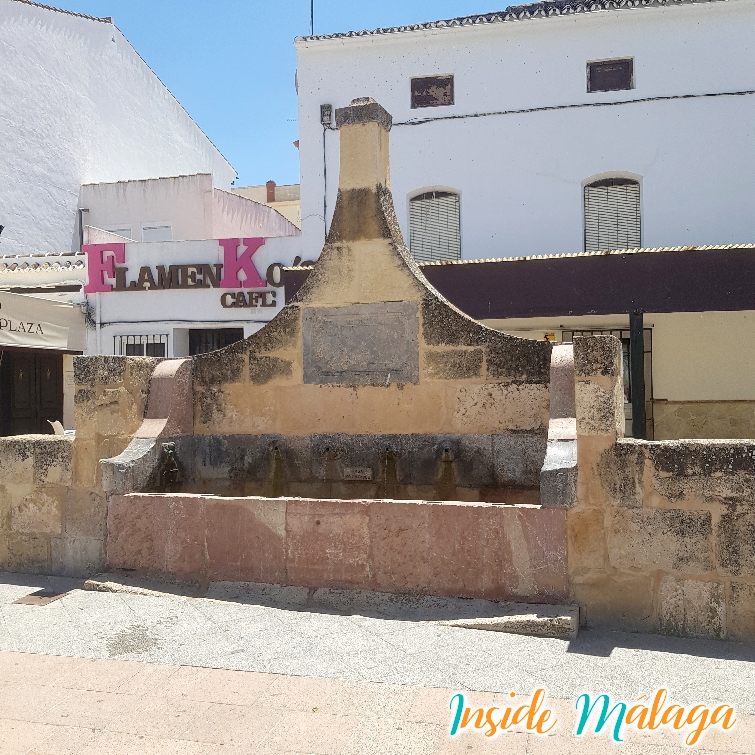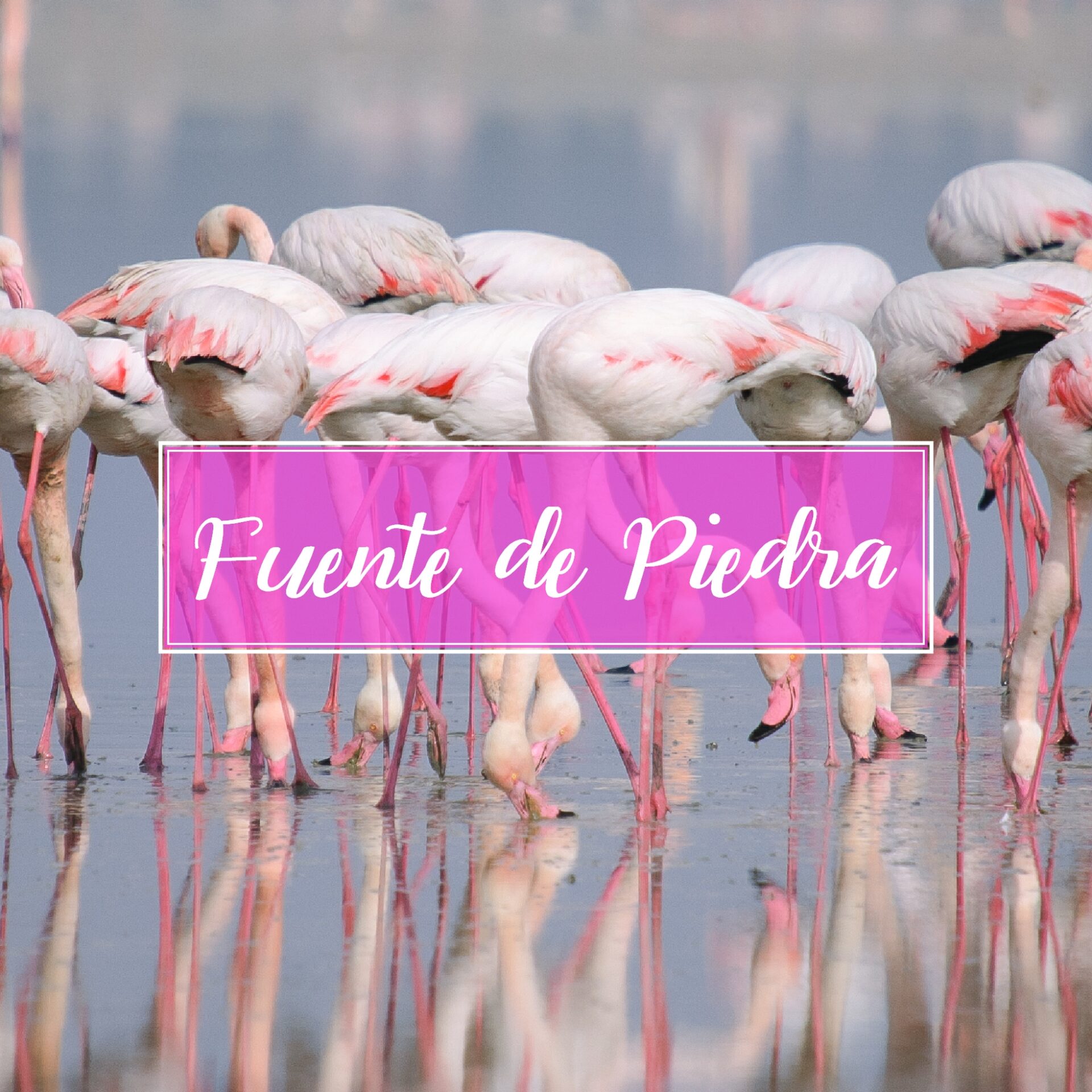Fuente de Piedra is famous for its impressive lagoon, the largest in Andalusia. This wetland is home to a spectacular colony of pink flamingos. Without a doubt, the favorite color of Fuente de Piedra is pink, especially in March, when over 20,000 flamingos land in the lagoon to breed. This natural phenomenon turns the lagoon into a vibrant pink sea, attracting birdwatchers and nature lovers from all over.
Where is Fuente de Piedra located
Fuente de la Piedra is located 71km from Malaga capital with a population of 2.594 inhabitants. The municipal term has a dimension of almost 91km square.
The origin of the name Fuente de Piedra
“Fuente de Piedra” literally means Stone Fountain. Because this water from this source had properties to cure multiple diseases, it became the symbol and name of this town.
Gentilicio de Fuente de Piedra
The inhabitants are called “villafontense“.
Where to park in Fuente de Piedra
We have not observed any difficulties to park in the center of the town, nor near the lagoon to go see the flamingos.
Curiosities about Fuente de Piedra
Every year 20,000 pink flamingos migrate to the lagoon a few kilometers from the town between the months march-may.
Monuments and places to visit in Fuente de Piedra
- Church of Nuestra Señora de las Virtudes: The temple had to be rebuilt after the earthquake of 1884. The name of the church is due to the waters of the main source of the town. The waters were considered “virtuous” waters and they said that the virgin was responsible for the good properties of the waters, hence the name “Virgen de las Virtudes”.

- Palace-House Conde del Castillo del Tajo: It is the oldest civil monument in town, possibly built in the 16th century with subsequent alterations. The importance of this palace is the water well since it sustained the population during epidemics in the 17th and 18th centuries that almost made the town disappear. After the earthquake of 1884 the palace was used as a church until 1889 after the main church in the village was destroyed.

- Fuente de Piedra: (Stone Fountain) The Romans called it «Font Divinus» since the properties of its water treated dozens of illnesses. The fame of its waters transcended the entire country and the Kingdom of Naples, and wherever it was exported. The fame and importance of this fountain made it become the symbol of the town and it was finally adapted as the town’s name. The fountain as we know it today was rebuilt with parts of the previous fountain.

- Interpretation Center José Antonio Valverde: Visitor center named after the biologist who discovered the flamingo colony. This center has facilities and information about the pink flamingo. Within its facilities you can learn everything about the <Fuente de Piedra lagoon> and the species of birds that migrate every year to the province to reproduce. From here there is a path that guides you to the area where you can see up to 20,000 pink flamingos between the months March and May. The chicks are normally born at the end of April.

- El Refugio del Burrito: Established in 2003, this refuge was created for abused and abandoned donkeys. You can visit this Andalusian farmhouse and enjoy an unforgettable experience along with unforgettable landscapes. You can even adopt a little donkey! a burrito!
- Mural-Painting: Located in Calle Sierra de Yeguas, a large painting mural in an old building where an old factory was housed. In the spring of 2021 a painting work dedicated to the immigration of the pink flamingo that occurs every year in the month of March is carried out.

History of Fuente de Piedra
After finding archaeological remains, we can conclude that there was a human presence in the prehistory, there is also evidence that there were settlements of the Iberian people and that they had trade relations with the Phoenicians and Carthaginians.
With the arrival of the Romans in the third century the area is called <Font Divinus>, Divine Source because medicinal properties were recognized for its water emanating from its source.
During the reconquest in 1461 Don Rodrigo Ponce de León, Señor de Marchena conquered the area during the Battle of Madroño. After the battle the expelled the Moors who lived in the town leaving the Fuente de Piedra area uninhabited.
Antequera decided to create a suburb-neighborhood in 1547 to house patients with kidney problems, and to treat them with water from the source.
The importance and fame of the waters led to the commercialization of the waters that reach the entire Spanish territory and the Kingdom of Naples, and even the New World that is the Americas.
From the 16th and 17th centuries to the 19th century, several drought crises in the lagoon and epidemics hit the area. So much so that the place creates bad reputation and discomfort among the inhabitants of the town.
Back then, looking for causes of the epidemics, they concluded that the lack of current in the stagnant waters and the vapors were the cause. Finally in 1959 it was decided to bury the fountain until it disappeared, but in 1983 it was decided to rebuild the fountain and tradition.
For more information about Fuente de Piedra Pueblo Village: visit the City Council page
